The
Fan Association of North America has a
video showing fans from the 18th to 20th centuries; the mid-19th century portion starts around 7:34.
The Hand Fan Museum is another resource. As the following examples bear out,
The Met and
UK National Trust collections have
huge selections of fans on their websites (the latter has an especially large number of pieced ivory and fixed fans).
There are different shapes of fan available in the 1860s, with the traditional half-or-semi-circle folding "fan" shape apparently most popular. These tend to range between 8.5"and 11" long when closed, with the "skirt" or "leaf" taking up approximately 1/2 to 2/3 of this length (the size and proportion both change over time--late 19th century fans are often closer to 14"). Sticks and guards can be made of various materials including
wood,
bone,
mother of pearl, tortoise shell, or
ivory--even
paper mache and
whalebone are sometimes used.
Lace,
feathers, and
metal sequins or "paillettes" sometimes appear as adornments (though the lace and feathers become more popular later in the century).
Paper leaves with printed (lithograph) designs are common. Cheap fans may have monochromatic prints, while more expensive versions could be hand-colored, or even all
hand-painted. Silk leaves were also used: some
painted, others
left plain.
 |
Inexpensive souvenir fan of the 1862 Paris Exhibition;
printed paper and wood. From the VAM. |
 |
More expensive fan: hand painted paper with gilt, carved mother of pearl
sticks, ivory guards. c. 1840-60. From the VAM. |
A similar-shape fan, sometimes called a "Jenny Lind" fan (after the singer) or a "palmette", has separate feather-shaped leaves on each stick.
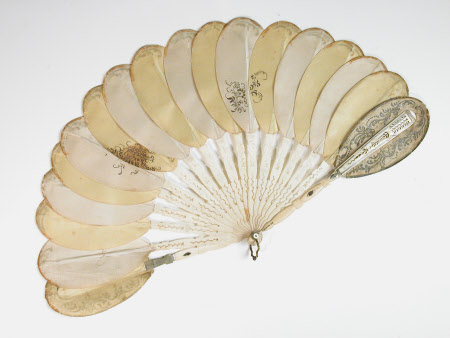 |
Ivory and bone fan with individual silk leaves, c. 1830-1870.
From the UK National Trust. |
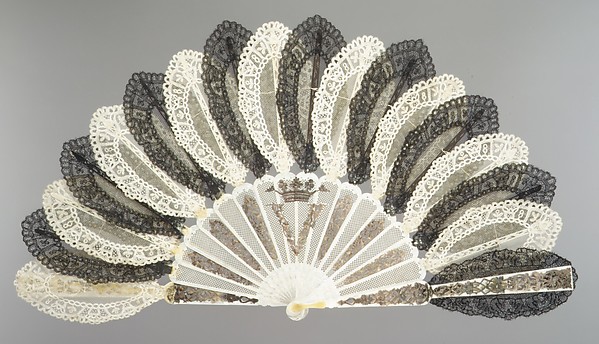 |
| Mid-19th century mother-of-pearl fan with lace leaves. From The Met. |
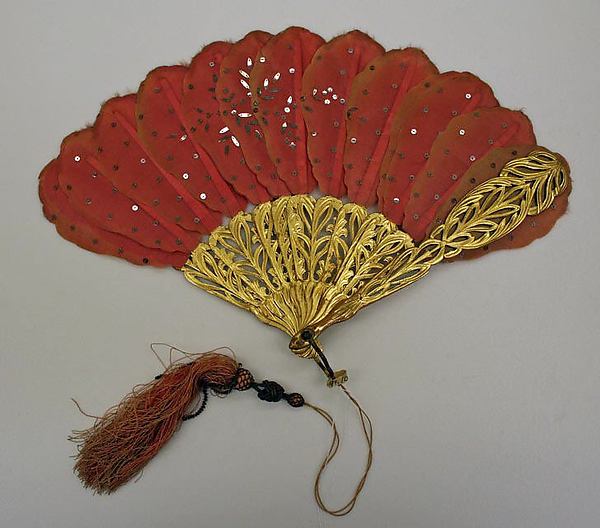 |
Fans with many painted or spangled silk leaves were popular in the 1860s.
This example, c. 1868, is from The Met. |
Brise fans are the same general shape, but without silk/paper leaves; instead, the blades themselves comprise the whole fan. The examples I've seen tend to be ivory (one was
horn, one
wood), with ribbon joining the blades. Most are
elaborately carved and some are also painted, though there is the odd
plain one. Where I can find dimensions, these skirt-less fans run 6"-9" closed length.
While these first three types of fan had approximately the same shape, other radically different styles were also used.
One of these is a circular shape (cockade), with the handle forming a case when closed. The handle may be wood, metal or leather; the "cockade" of
paper,
straw,
silk or
cotton. The only dimensions I've found are 11" (closed) on the straw example.
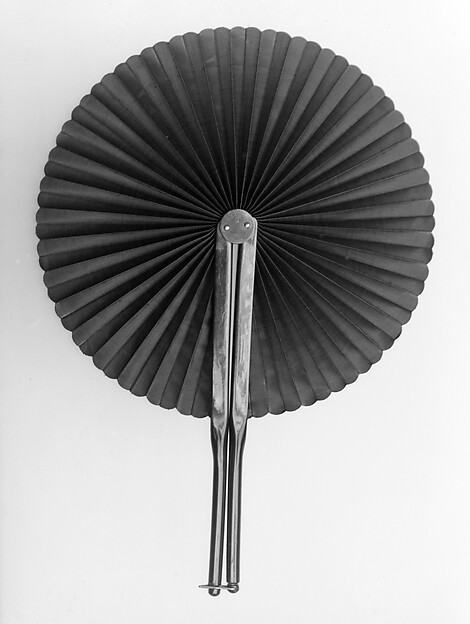 |
| Silk and wood "cockade" fan, 19th century. From The Met. |
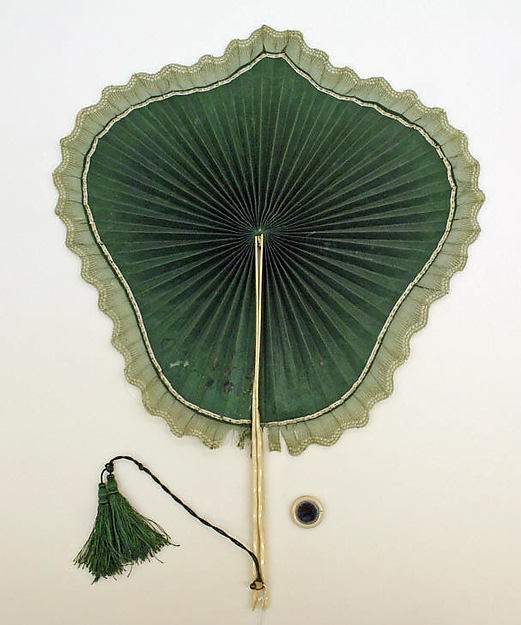 |
| Silk and bone fan, c. 1850. From The Met. |
Solid "fixed" fans or hand screens are another option. Usually 12"-14" in length, they often have a wooden handle attached to a piece of decorated wood, cardboard, or canvas.
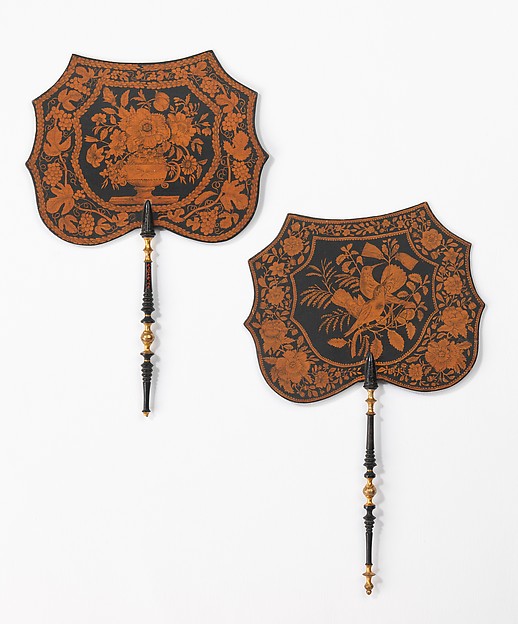 |
| Painted wood fans, c. 1837, from The Met. |
Similar fixed fans appear in other interesting materials, such as
guinea fowl or turkey feathers, and the ubiquitous palmetto or palm-leaf fan. This consisted of a palm frond, which had been woven into a distinctive spade shape (Abraham's Lady sells
reproductions).
Miss Leslie (p. 33) advises buying palm-leaf fans with self-handles, as the attached bamboo ones tend to come loose. Though frequently mentioned in period literature as commonly-used, inexpensive articles, I've found no images of original ones from the period.








I believe the black cockade fan is more C. 1880 than Civil War. This could be borne out by the book on fan patents authored by Greta Walberg.
ReplyDelete